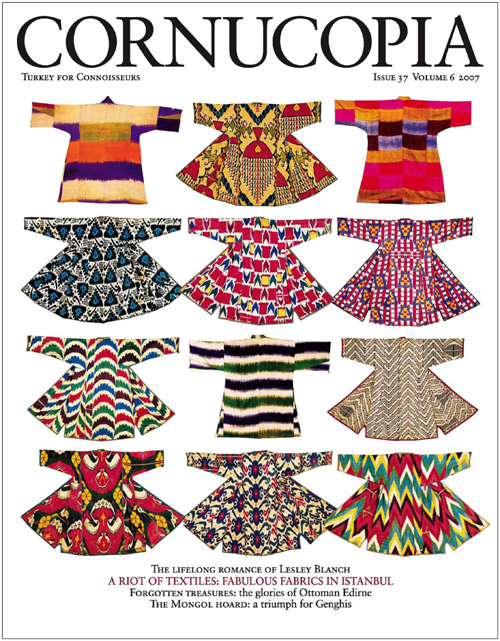Buy or gift a stand-alone digital subscription and get unlimited access to dozens of back issues for just £18.99 / $18.99 a year.
Please register at www.exacteditions.com/digital/cornucopia with your subscriber account number or contact subscriptions@cornucopia.net
Buy a digital subscription Go to the Digital EditionThe floor of the Great Mosque of Divriği was once a blaze of colour, covered with legendary carpets. Its ao-called ‘Ancestor’ rugs include perhaps the oldest Islamic carpet to survive in reasonable condition. Following a serious theft in the 1970s, the collection is now housed in Istanbul. Daniel Shaffer explains what makes it unique
Few places are more important in the story of the Turkish knotted-pile carpet (hali) than the Great Mosque of Divriği. Thanks to the charitable tradition of Vakf (pious donation), the mosque served as a remarkable repository, a true treasure house, for some of the most inspirational surviving Anatolian carpets, and for carpets from far beyond.
The Divriği carpets extend across over half a millennium. In addition to Turkish rugs, there are significant pieces from the Caucasus, northwest Iran and Syria. They first came to the attention of connoisseurs in the early 1960s, when they were seen by the patron of Turkish carpet studies, Professor Kurt Erdmann of Istanbul University, and his protégé Şerare Yetkin, who illustrated a handful of them in the 1974 Turkish first edition of her ubiquitous Historical Turkish Carpets (Istanbul 1981).
In 1972 a group that included the eminent US carpet guru Charles Grant Ellis visited Divriği to photograph and anyalyse the carpets. Ellis went on to introduce them to the first International Conference on Oriental carpets (ICOC) in London in 1976, and in 1978 some were shown in black and white in an article by Belkıs Acar (Balpınar) on the Divriği complex.
Soon afterwards the carpets were heard of in very different circumstances, when 24 were stolen from the mosque. Fortunately, all but three were recovered in 1982. For safekeeping they then joined the other Divriği holdings in the care of the Vakıflar Directorate in Istanbul.
Daniel Shaffer is executive editor of Halı Magazine
The two carpets featured in this article were centrepieces of the Icoc Vakıflar Carpet exhibition in Istanbul in 2007.
Famous for his atmospheric films set in stark landscapes, Nuri Bilge Ceylan is now attracting attention with his photography. Maureen Freely leafs through the pages of a fine limited-edition album of his enigmatic, painterly scenes
In September 2009, six travellers set out on horseback to retrace the early part of the route taken in 1671 by the Ottoman traveller Evliya Çelebi on his way to Mecca.
Spirited impressions of Ottoman Istanbul in the 16th century from a mischievous Danish artist and an acerbic Flemish envoy.
When eaten raw as a salad, turnips are shredded or thinly sliced like radishes. Their distinctive mustardy bite, which cleanses the palate, makes them excellent company for rich meats and fish. Cooking however, transforms the starch in the turnip, giving it a mellow taste.
More cookery features
The Great Mosque and Hospital of Divriği, an imperilled masterpiece of Islamic art in the remote upper Euphrates, is the only single building in Turkey given world heritage status. Cornucopia celebrates this medieval marvel with a 26-page guide to its mad, exuberant architecture through the stunning photographs of Cemal Emden
The city of Dresden is now home to one of the finest displays of Turkish art and armoury
Little known and rarely visited, the hauntingly beautiful sanctuary of Zeus at Labraunda – built by the family of the legendary Mausolus high above Milas – was for centuries Aegean Turkey’s most revered shrine. A Swedish team has managed to uncover the ruins without sacrificing the serenity of these sacred hills.
Reassuringly inaccessible, Divriği has always taken time to reach – and its riches time to savour. Patricia Daunt on the historical figures who made the journey


Cornucopia works in partnership with the digital publishing platform Exact Editions to offer individual and institutional subscribers unlimited access to a searchable archive of fascinating back issues and every newly published issue. The digital edition of Cornucopia is available cross-platform on web, iOS and Android and offers a comprehensive search function, allowing the title’s cultural content to be delved into at the touch of a button.
Digital Subscription: £18.99 / $18.99 (1 year)
Subscribe now